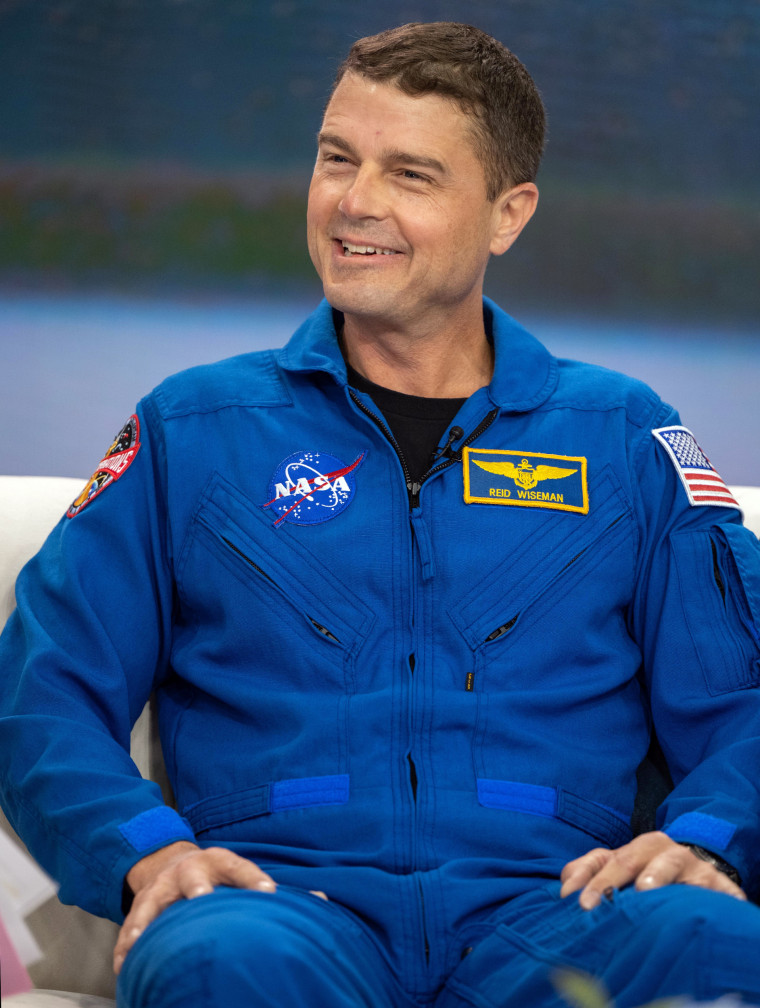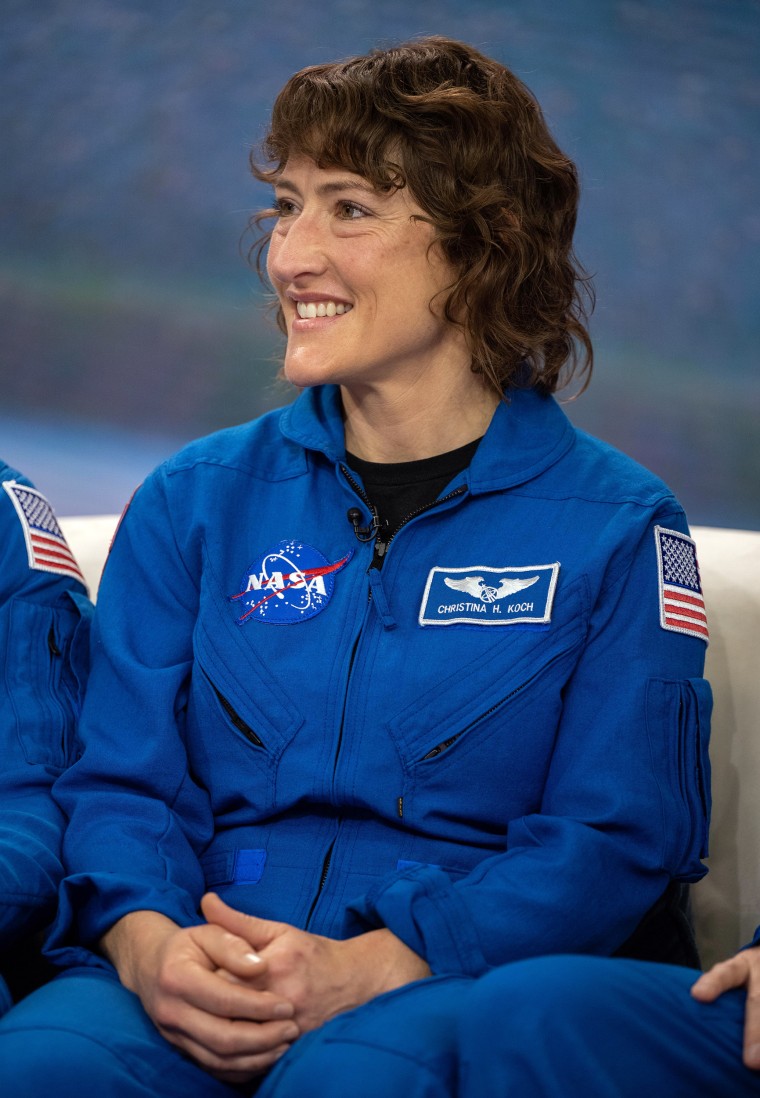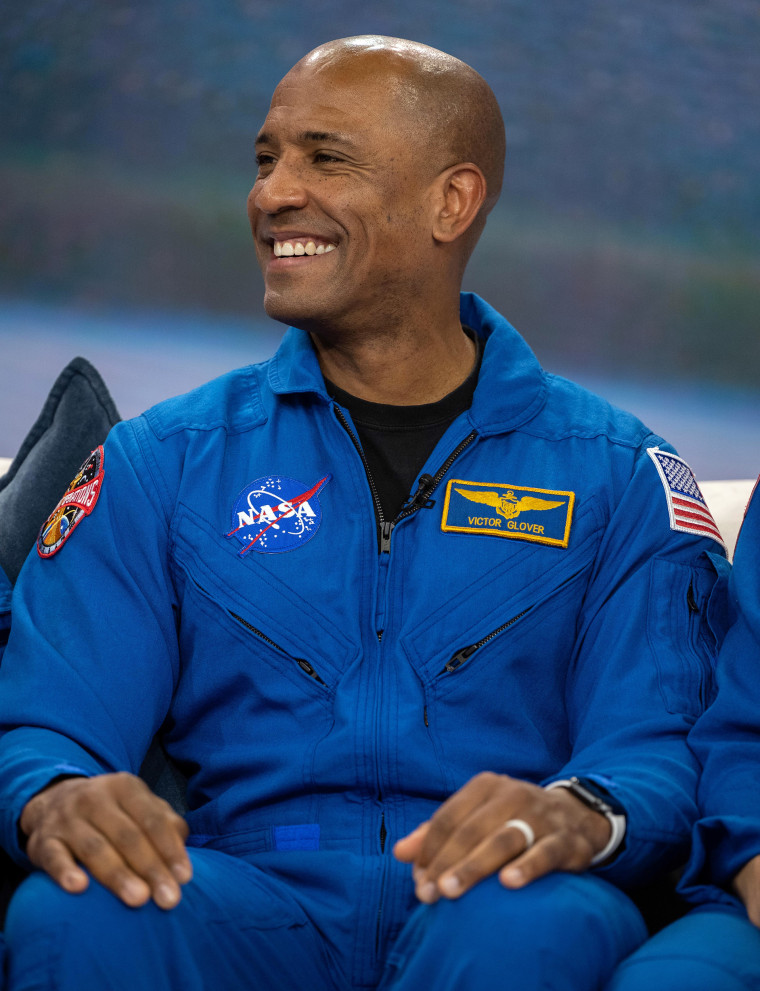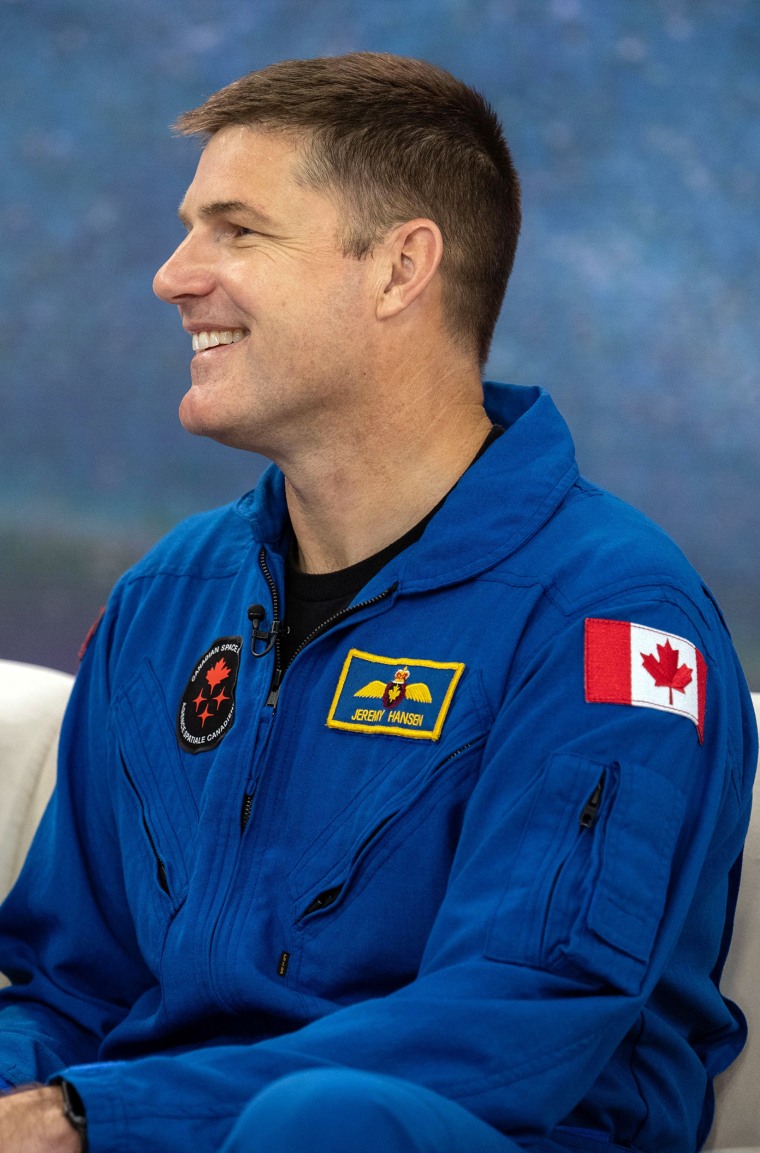NASA has chosen the four astronauts for the Artemis II mission, which will be the first crew leaving Earth to orbit the moon since the Apollo missions more than 50 years ago.
The four astronauts — Commander Reid Wiseman, Pilot Victor Glover, Mission Specialist 1 Christina Hammock Koch and Mission Specialist 2 Jeremy Hansen — spoke about their reactions to finding out they had been selected for Artemis II on TODAY.
"For me it was almost calming, like, 'OK, now we can get to work. We know who's going to be on this crew,'" Wiseman, 47, said. "First I wanted to know who am I going with — and I've got basically the best crew you could ever wish for in Victor, Christina and Jeremy — and then you want to call your family."
He called his dad and told him it was a "huge secret, don't tell anyone," but then he started getting texts from all of his neighbors, Wiseman said while laughing.

Koch, 44, will be the first woman to orbit the moon, and has been a NASA astronaut since 2013. She has set the record for the longest spaceflight by a woman, but she says her journey to the moon started at NASA's Space Camp in Huntsville, Alabama, in 1992.
"It's an absolutely incredible moment to have the opportunity to give back to the people that were inspiring me when I was that young little girl, and to eventually realize the dreams that were in the posters on my wall as a kid," Koch said.
One of the posters on her wall as a child was of the iconic "Earthrise" shot taken by William Anders on Apollo 8, showing the Earth peeking out from behind the lunar surface. Koch said the photo has been an inspiration for her entire life.

"When I think about how the mission that we're on is the modern day mirror of that mission, and that we might have the opportunity to bring back an image like that — that hopefully unites all of humanity behind what we're doing and that you can do great things when you come together. That's an awesome mission," she said.
Glover, 46, will be the first person of color to orbit the moon and serves as the pilot on the mission. He explained the mission's flight path on TODAY, which includes spending the first day orbiting the Earth, about 40,000 miles above the planet.
After testing out key components like the Orion vehicle and docking system and life support systems for future missions like Artemis III — which is scheduled to put astronauts on the moon in 2025 — the crew will leave Earth's orbit, Glover said.

"Then we get those amazing words that we haven't heard for over 50 years: 'You're go for TLI,'" he said. "Trans-lunar injection is the burn that sends us to the moon. And on this trajectory, it's also the burn that will sling us back to Earth. So that one burn gets us there and back."
In all, the Artemis II mission will travel over 1.4 million miles in a figure-eight shape around the moon for about 10 days before the crew heads home.
The fourth member of the Artemis II crew is Canadian astronaut Jeremy Hansen. It will be his first time going to space.
When asked what is it that makes the crew want to go to space, Hansen said: "It's just that spirit of exploration."
"Right now, we're not scared at all. Like, that doesn't even intimidate us, we're just excited," Hansen, 47, added. "This is the stuff that has inspired us all of our lives and we just want to go. We're really excited to get going."

Glover spoke about what became clear to him during his time in space at the International Space Station.
"We are on the ship together and that's all the life we've ever found," Glover said. "It makes you want to take care of that planet, which takes care of us. And it makes you want to take care of each other -- you see the world as it is, no labels, no legends."
"When you see the world as it is, you see that there's no division," he added. "There's no natural division, but we are all on this together, we're one people."
NASA views the Artemis missions as crucial steps in its mission to land on Mars in the late 2030s or early 2040s, agency officials have said.
"To go to Mars, we got to go first to the moon," Wiseman said. "Really at the core, humans are explorers, and we want to motivate the youth of the entire world to go do something great."
Artemis II is scheduled to leave Earth's orbit, reaching speeds of over 20,000 mph, as early as late 2024, but Wiseman said the crew doesn't have a specific date yet.
"We will launch when NASA is ready, when the vehicle is ready and when we are trained and ready," he said.
